-
Car Reviews
- Car News
-
Car Comparisons
Latest comparisons
- Chasing Deals
The diesel U9 is MG’s first ute, and its success is critical to MG’s plans to aggressively grow sales in Australia. We’ve now had our first drive
Chinese car manufacturer MG has been enormously ambitious — and enormously successful — in the Australian market in recent years, achieving a record seventh place by sales volume in 2024 with 50,592 new cars delivered to Aussie customers.
But according to MG senior executives stationed in Sydney, seventh simply isn’t sufficient. The goal is top-five — the only problem being that (based on 2024 numbers), sixth-placed Hyundai (71,664 sales) and Mitsubishi (74,547) stand in the way.
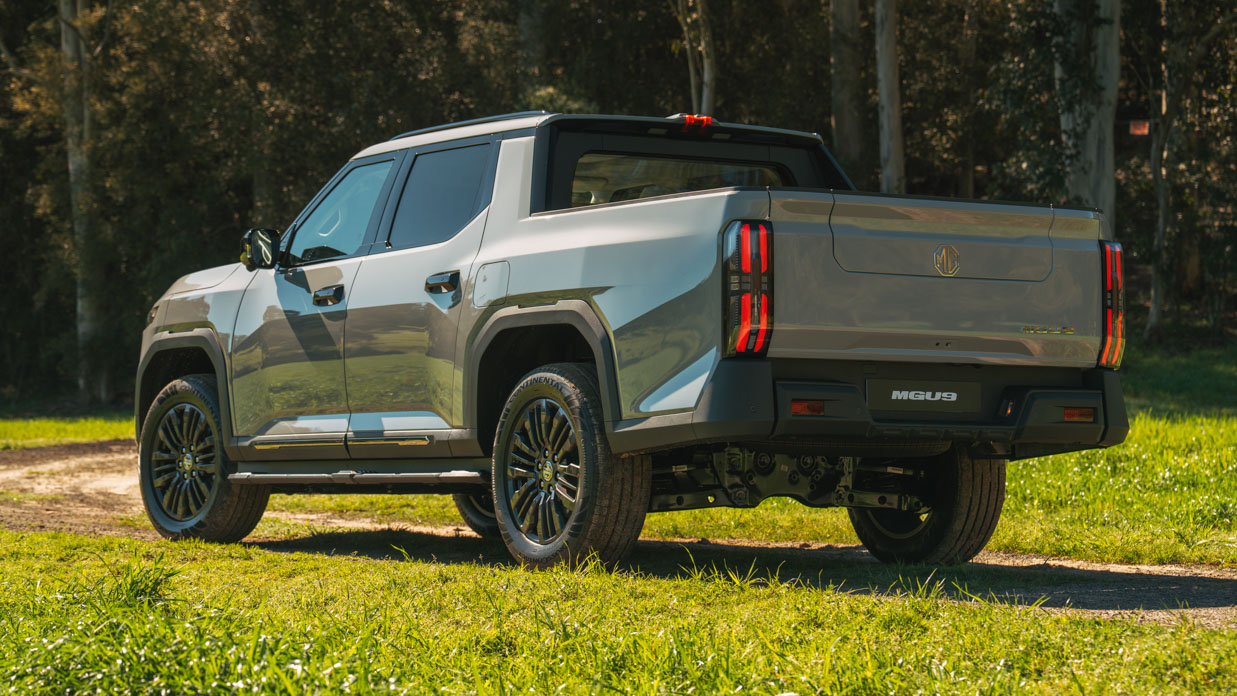
MG’s plan to knock those rivals out of its path to a fifth-place finish is all about selling more vehicles that Australians want to buy. That includes hybrid and electric SUVs (which have been a major source of growth for MG in this country), but it also means producing a ute — and selling it in large numbers.
That ute is the new MG U9, which will roll into Australian showrooms in time for Christmas, and early versions were available for Chasing Cars to test off-road and on private gravel roads in pre-production format earlier this month.
Pricing for the U9 is ambitious, with the base Explore kicking off at $52,990 driveaway despite being specified more like a mid-tier model in rival pick-up ranges. A sweet-spot U9 Explore X is $55,990 d/a – while the top-end Explore Pro will set buyers back $60,990 d/a.
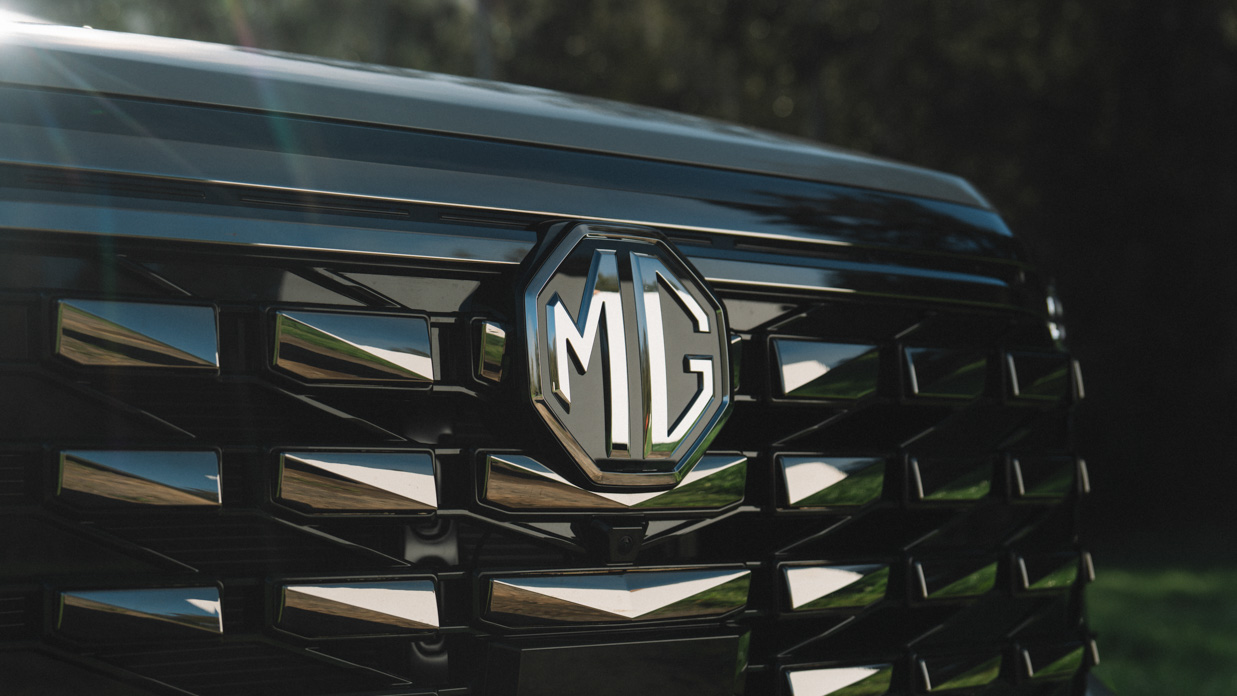
A range of accessories, developed in partnership with Australian suppliers, will be available with pricing set to be revealed soon. They’ll sit under the U9’s warranty, which is significantly shorter than MG’s other models: it’s a five-year/unlimited kilometre setup extendable to seven years/200,000km if the ute is serviced within MG’s network.
Launching with a starting driveaway price of $52,990 is an exercise in humility for MG, and we wager the U9 will get receive plenty of attention as a result.
Given MG will need to sell 10,000-plus U9s annually in Australia (while growing other model sales) to reach its top-five goal, very sharp pricing to build volume is simply a necessity.
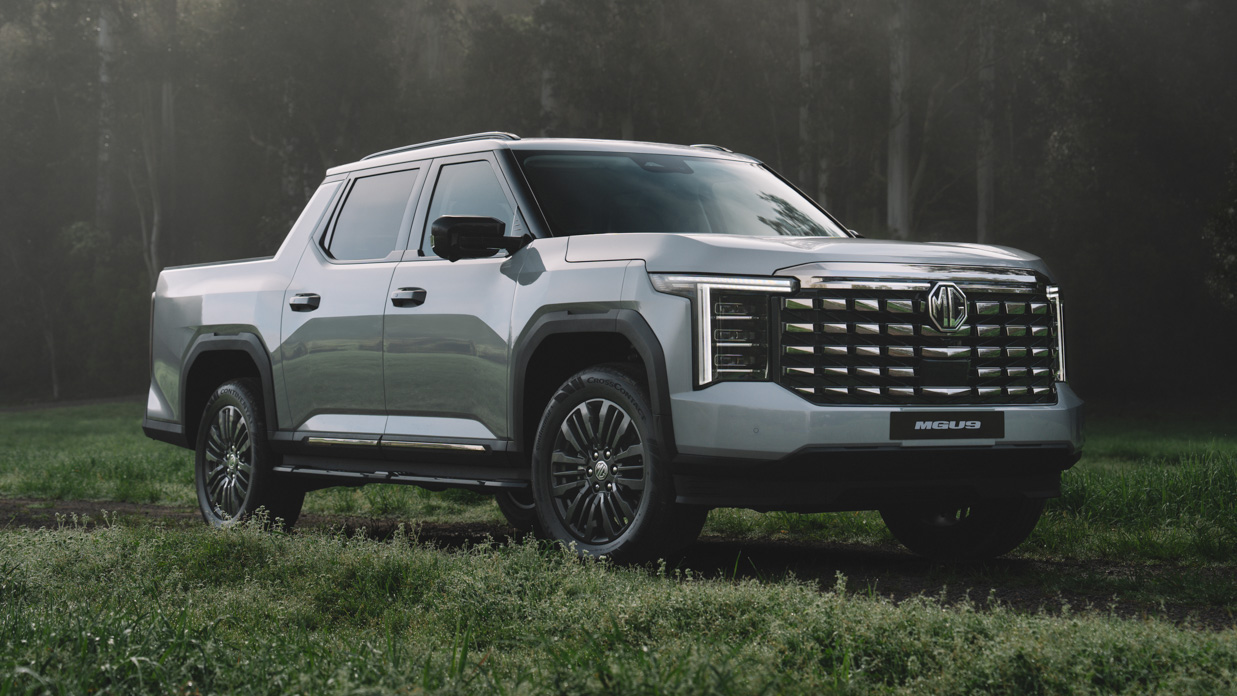
These sorts of prices throw the U9 into sharp contrast with the Kia Tasman — the other big-name ute launch of 2025.
The South Korean pick-up, which we recently handed the win in a four-way test with the Toyota Hilux, Ford Ranger and Mitsubishi Triton, is priced within coo-ee of the Toyota and Ford. So far, it’s been a tough sell.
Kia and MG are in similar positions in terms of their new utes: both need to sell large volumes of their pick-ups to achieve tough commercial goals.
While the Tasman focuses on dynamic excellence and high-quality, MG has taken the traditional challenger-brand path: it’s a big vehicle, with lots of stuff, for a low price.
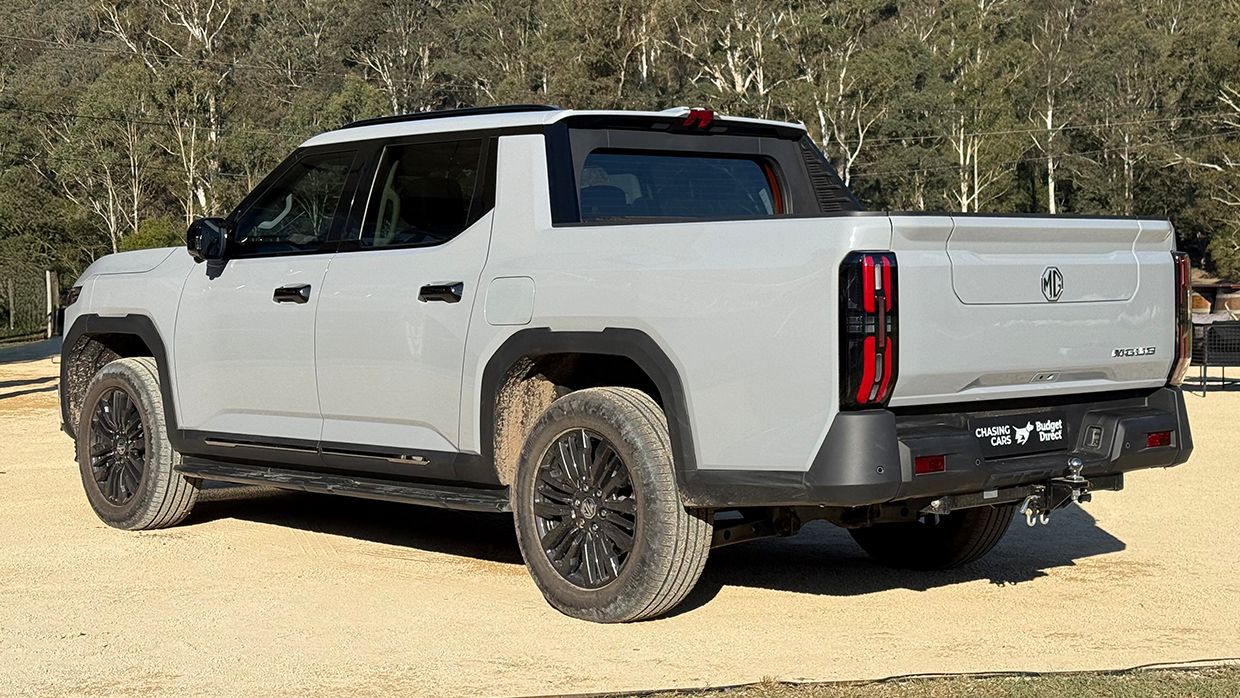
Does that mean there are catches to the U9? It would appear so, with every example we drove on the closed-road pre-drive event exhibiting various rattles, squeaks and middling interior fit and finish. Outside, paint quality seemed reasonably good.
So — there are some concerns from the start, but we plan to keep an open mind until we can subject the U9 to a proper Chasing Cars test in our own environment.
Look beyond some rattling (or, perhaps more pertinently, turn up the six-speaker stereo … or eight-speaker JBL on the Explore Pro) and the U9 delivers an appropriately impressive experience in terms of kerb appeal. It’s reasonably handsome, to start with.
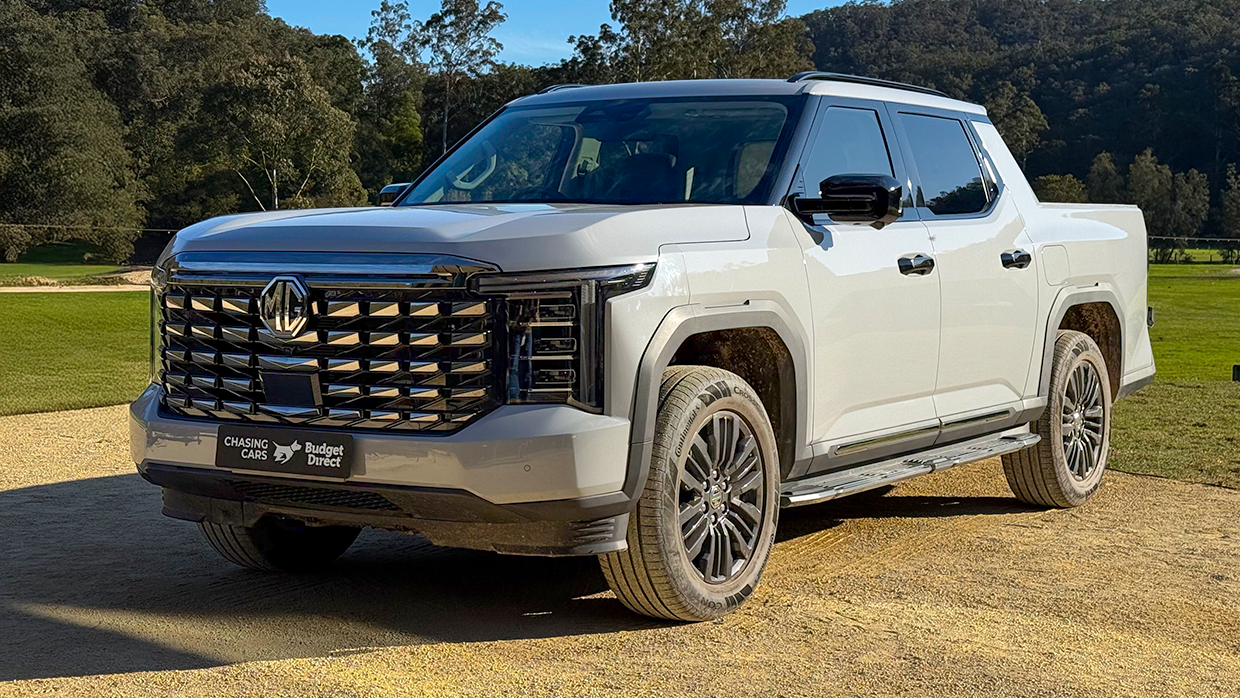
Plus, the U9 is noticeably bigger than rivals like the Ford Ranger. The MG measures 5500mm in length and 1997mm in width, and its profile is clean — partially because, rather unusually, the U9 is a unibody vehicle. There is no separation between the cab and the tray; they are one piece.
That will severely restrict the ability to customise the tray of the U9 (and service bodies are probably out of the question) but for users that are happy with the package as it comes, there are various benefits, not least a cost-optional folding midgate feature that extends the tray right into the cabin.
We don’t yet know what the folding midgate will cost but the execution is clean and tidy. While the MG U9 isn’t the first unibody ute with the feature (readers might have heard of the US-market Chevrolet Avalanche), but it’s novel and innovative here in Australia.
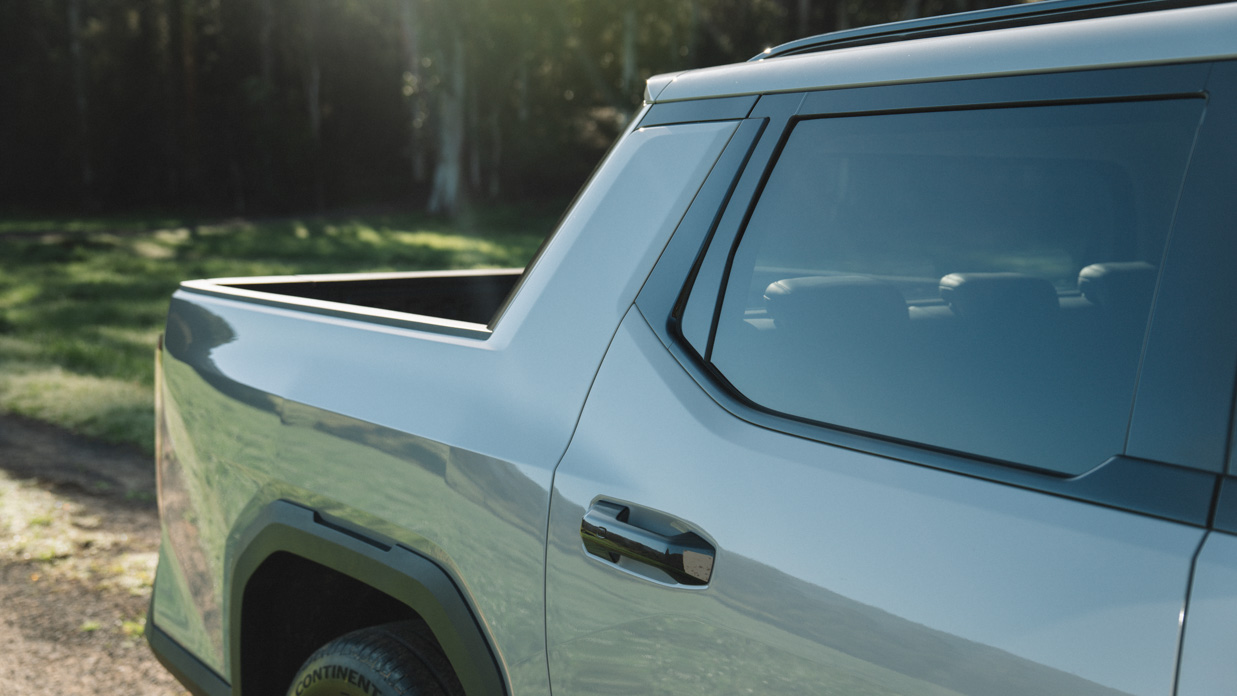
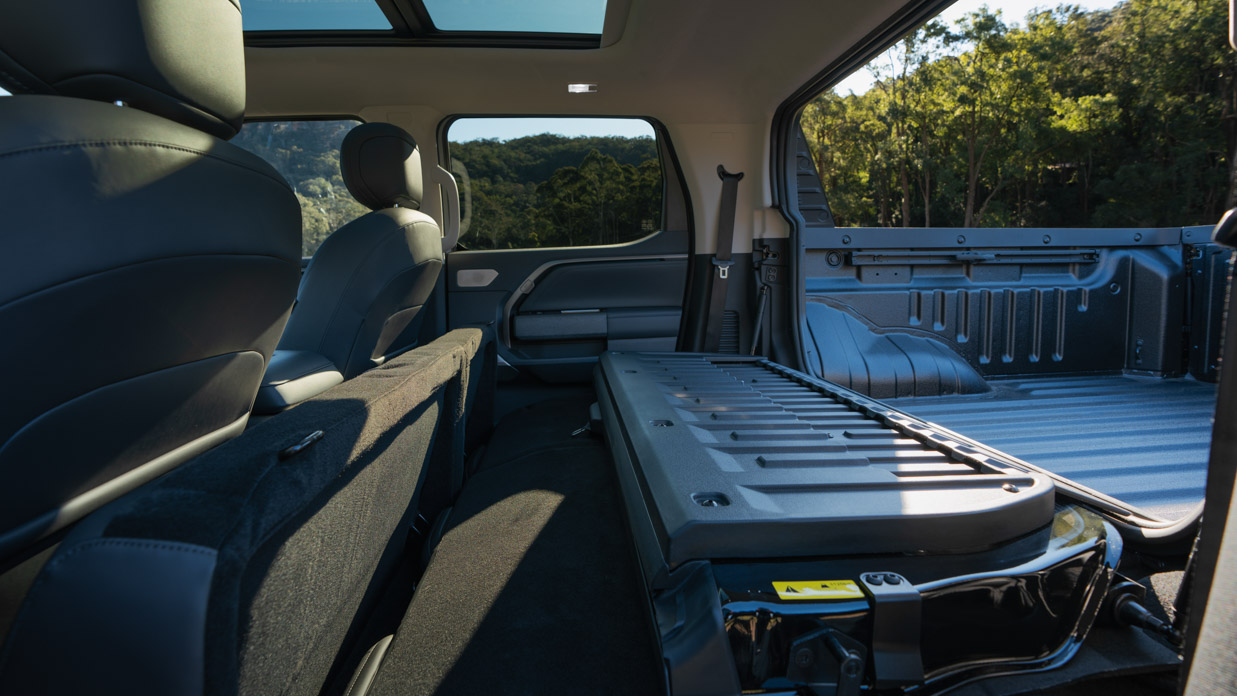
Unibody construction also means the U9 is more rigid than key rivals, and it felt that way off-road. We were thrown into a number of experiences, from fairly G-rated water-crossings to some more ambitious moguls, climbs and descents, plus some extended time driving on hard-packed clay/gravel tracks that almost simulated roads.
All that stiffness means the U9 felt cohesive and car-like (as you’d expect), but perhaps the extra stress on the interior from such a rigid construction brought out the aforementioned trim groans.
There’s also relatively limited ground clearance (220mm) and wading depth (550mm) and modest articulation. But there’s a related ace up the U9’s sleeve.
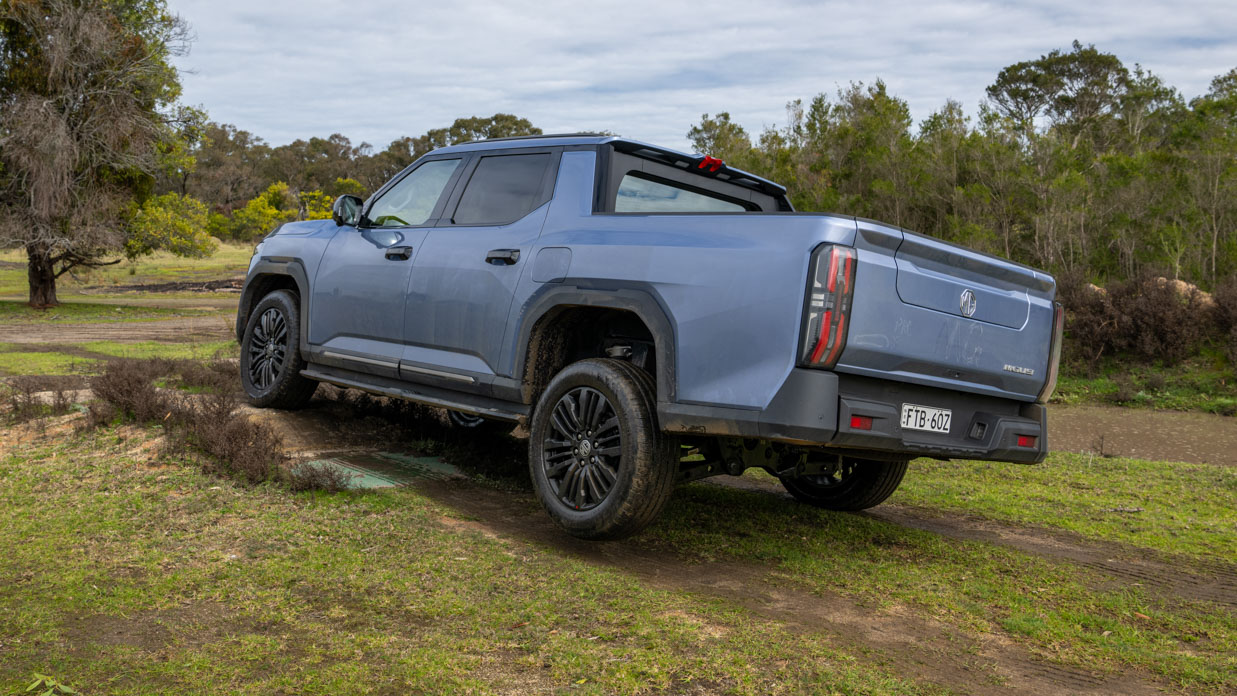
That ace is independent rear suspension, which is not so much a product of the MG’s unibody nature (the closely-related LDV Terron 9 is unibody with a live axle/leaf sprung rear), but the standard-with-IRS U9 is shaping up to have superior ride quality and compliance to nearly any rival.
Our testing was limited by our environment and we’re desperate to get the MG out onto real roads at higher speeds to see how the suspension performs. But doing our best at 60km/h on hard-packed gravel, first impressions showed decent compliance with a considerably less intrusive ride than your average ute.
Other dynamic attributes are fine — not more. Steering feel is very light and the rack itself is slow; that’s good for precise placement off-road (helped by the Explore Pro’s 1080p 360-degree camera system that is also handy for hitching trailers solo).
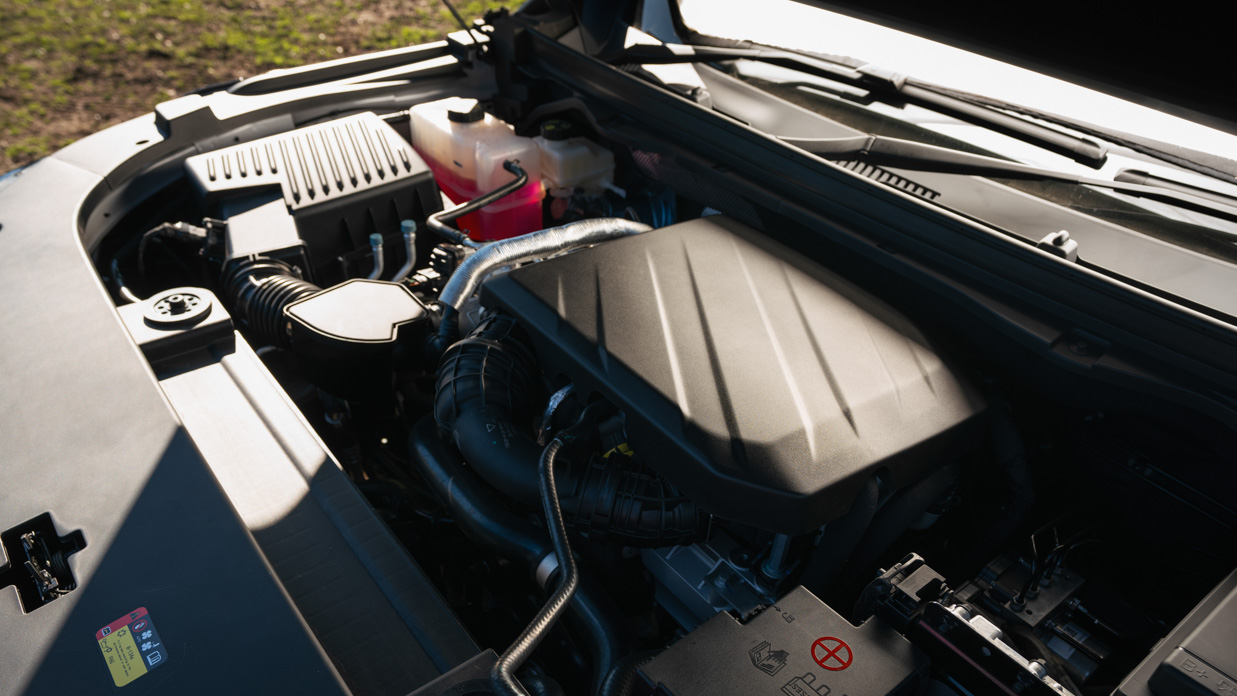
The only powertrain is a 2.5-litre turbo diesel four-cylinder making competitive numbers (160kW/520Nm). Under light throttle it’s a refined thing with polished NVH attributes. However, start demanding more and the diesel mill becomes sharply more gruff.
Later, expect a plug-in hybrid petrol/electric powertrain to be added to help MG sell more U9 units wihtout disturbing its compliance under Australia’s NVES emissions regulations.
For now, the diesel’s 7.9L/100km consumption and 208g/km CO2 levels are okay for the ute class, but in the long term these numbers will be unhelpful for MG.
Shifts through the sole transmission (an eight-speed ZF torque converter auto) felt pretty silky and impressive, too, is the short time required to engage/disengage low range from the BorgWarner transfer case. Off-road modes are plentiful and represented clearly through the main touchscreen.
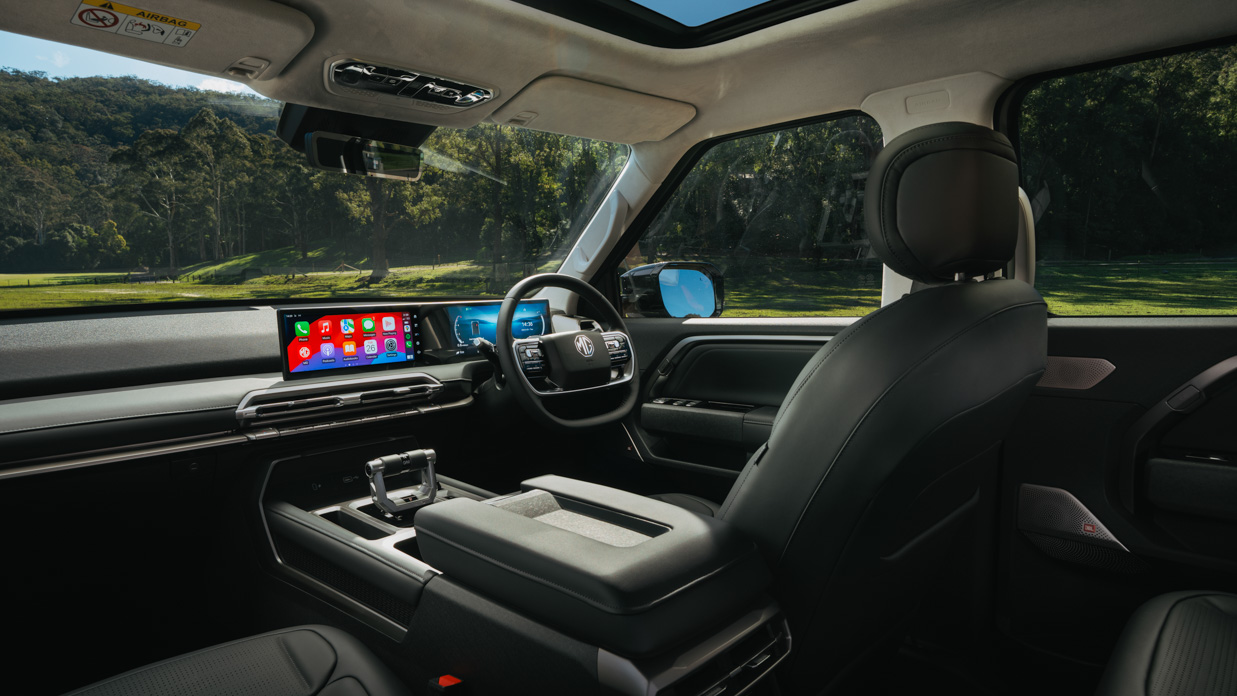
Speaking of screens, the standard twin 12-inch display package works intuitively while hard keys are (mercifully) used for fan speed, temperature, transfer case, and drive modes while the auto ‘box is shifted through a rather over-the-top, aviation-inspired shifter.
It’s a whimsical touch in a generally pleasant-looking cabin with reasonable ergonomics. Drivers sit high, while the cowl is low, presenting decent visibility.
However, unlike the Kia Tasman which delivers a smart and high-quality cabin, the U9’s interior looks very fancy but it not actually that expensive under the skin.
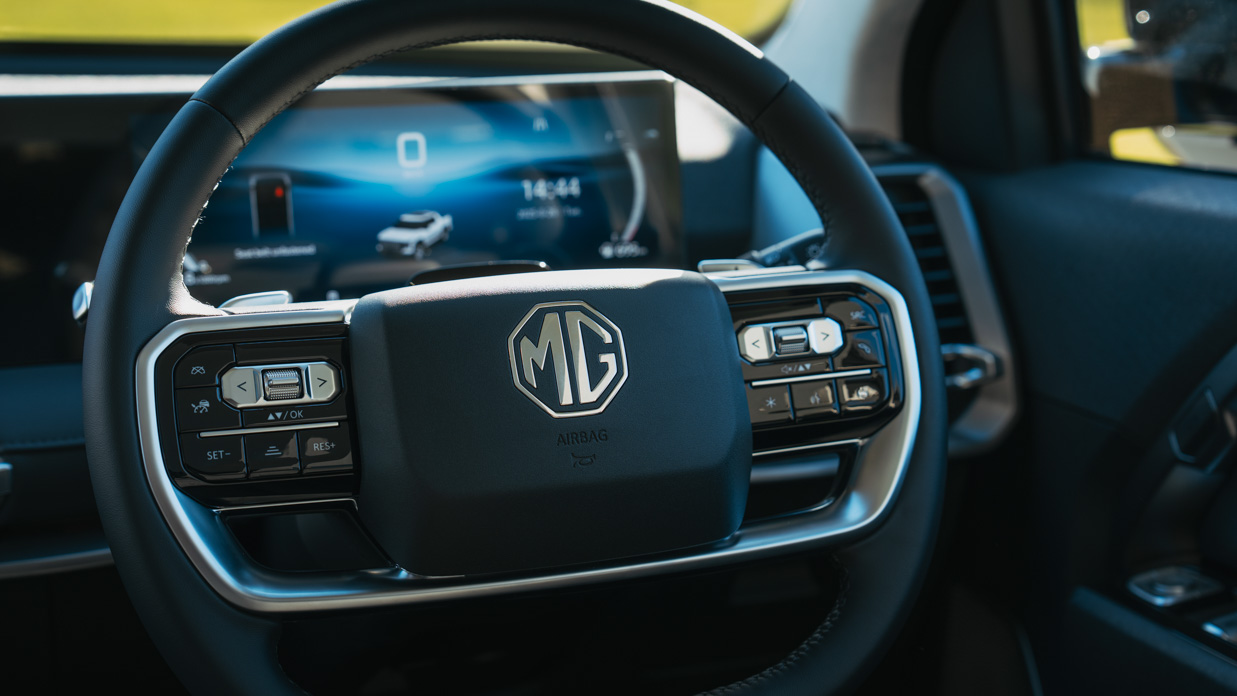
And frankly, that’s quite fine at the price. More important is the fact that storage is plentiful and the back seats are commodious, partially due to the long 3300mm wheelbase.
Adults fit easily in the rear and a fully-flat floor means even a trio is possible. We appreciate the standard rear air vents.
Cooling the big cab took longer than in a Hilux, we felt, but on the flipside, Explore X and above enjoy heated front seats while the Explore Pro extends the hind-warmers to the back row.
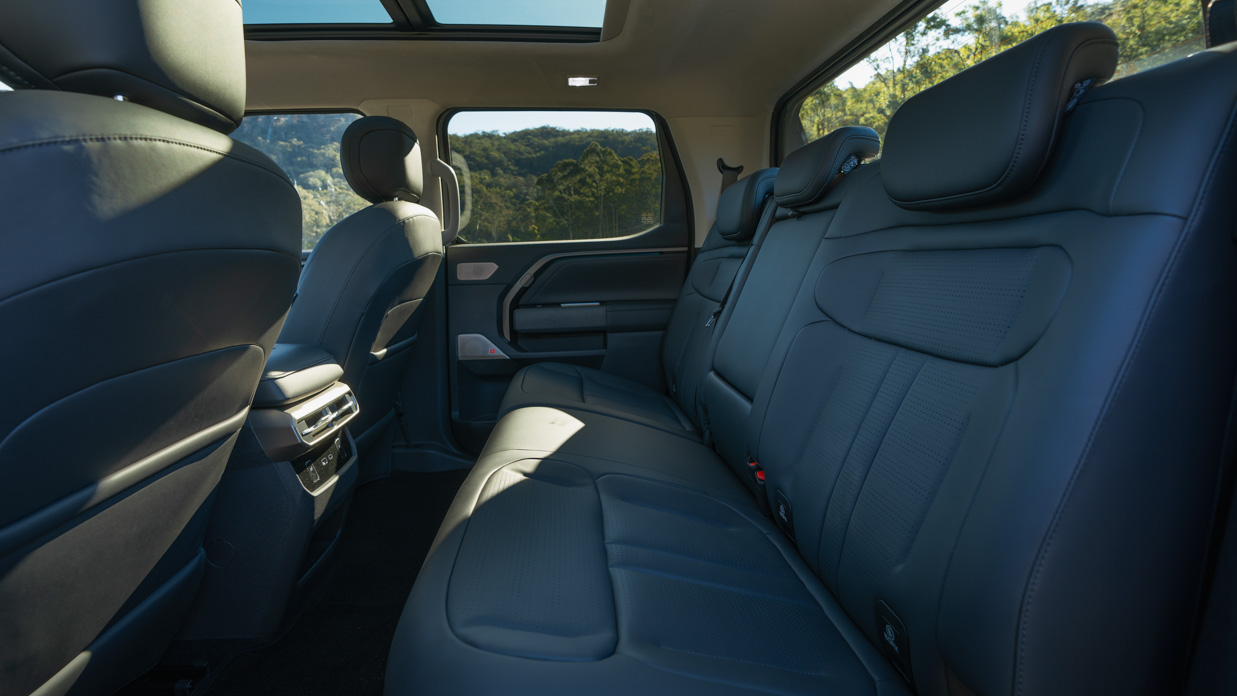
Oddly, the Explore Pro’s cooled front seat is just that: singular, with seat ventilation privileges not extended to the front passenger! Weird.
Standard equipment is, as expected, generous.
Even the $51K entry Explore wears 18-inch alloys, with dual-beam LED headlights and chrome trim, with side steps and a painted tub liner included. Inside, a leather steering wheel adjusts for reach/rake; the seats are vinyl, but the driver has six-way power adjustment.
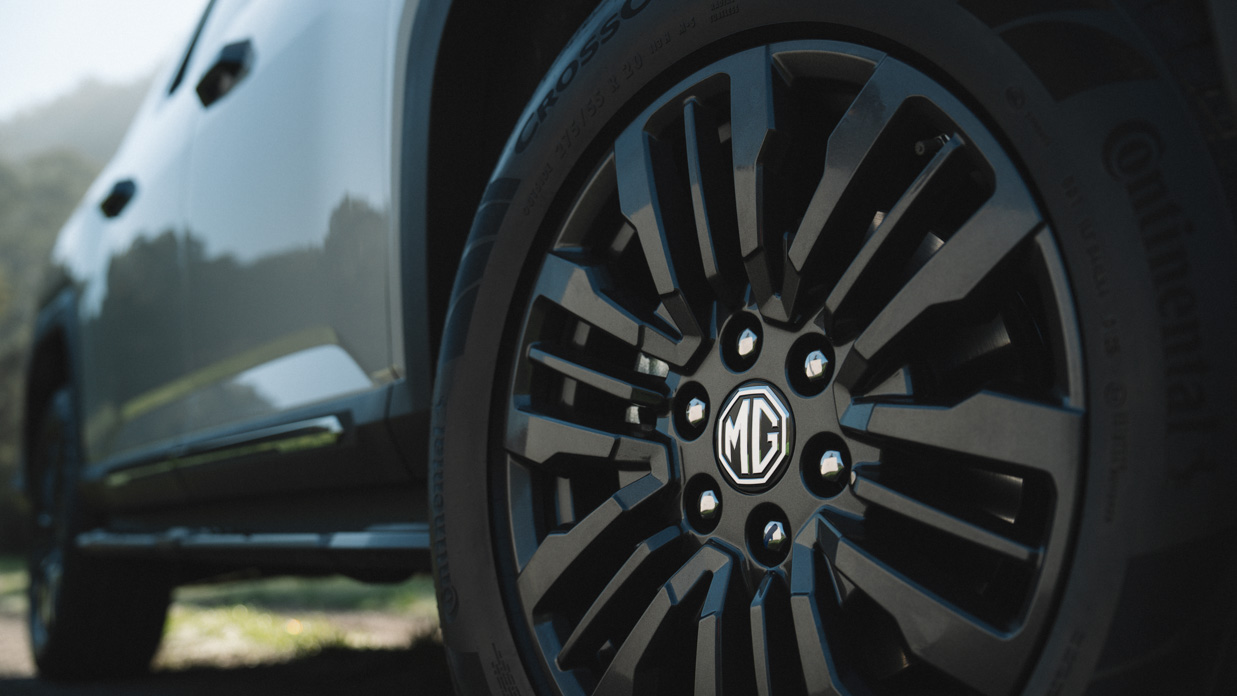
Other inclusions at the base level include twin 12.3-inch displays, with wireless Apple CarPlay/Android Auto, DAB+/AM/FM radio, Bluetooth streaming, a six-speaker stereo, wading sensor, front and rear parking sensors, and a reversing camera.
The sweet spot may be the mid-range U9 Explore X ($55,990 driveaway), which adds meaningful conveniences including iSmart connectivity (vehicle app, over-the-air updating, music streaming), acoustic glass, heated front seats, a power passenger seat, and sat nav.
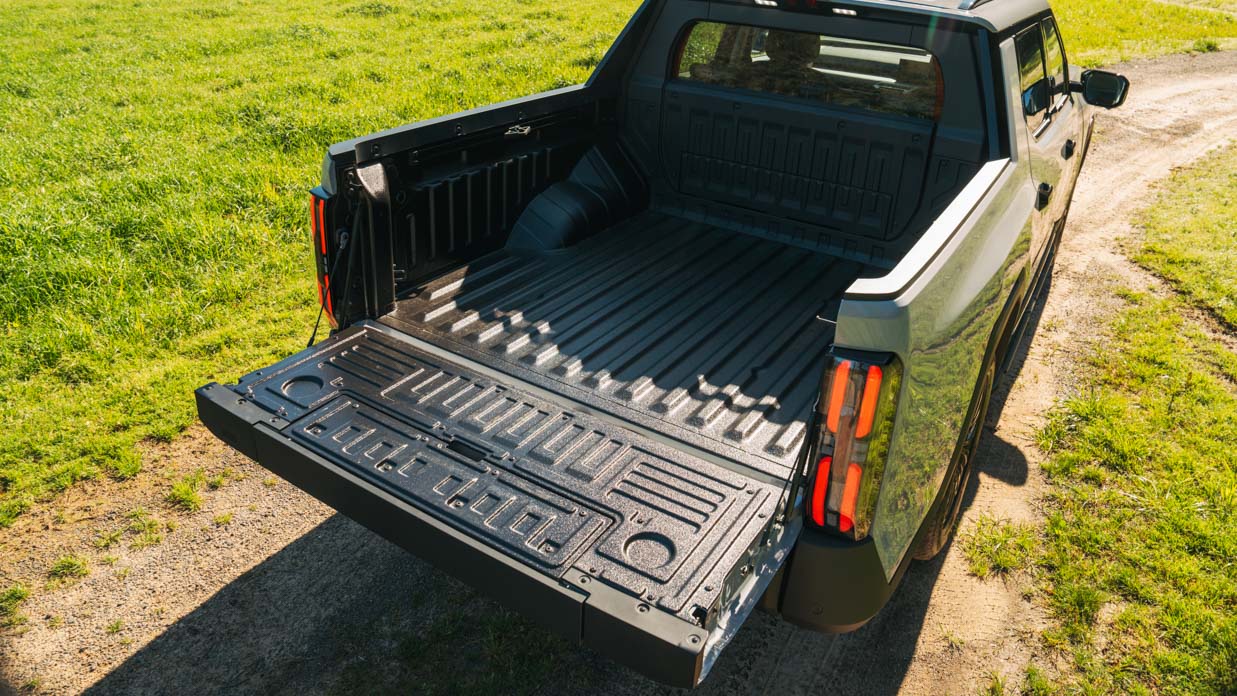
Explore X also nabs useful kit including tray lighting and cargo slide rails, 360-degree camera, wireless device charger, electric folding mirrors, and an auto-dim rear view mirror. It rolls on larger alloys (19-inch) and gets superior triple-beam LED headlights.
Top-end Explore Pro ($60,990 driveaway) has 20s, and switches chrome for a black pack. It exclusively includes a front locker, electric-open tailgate with step, real leather, panoramic sunroof, fully-folding rear seats, ambient lighting, and digital rear view mirror.
It also steps up to a high-definition camera system and grabs a trailer reversing assistant.
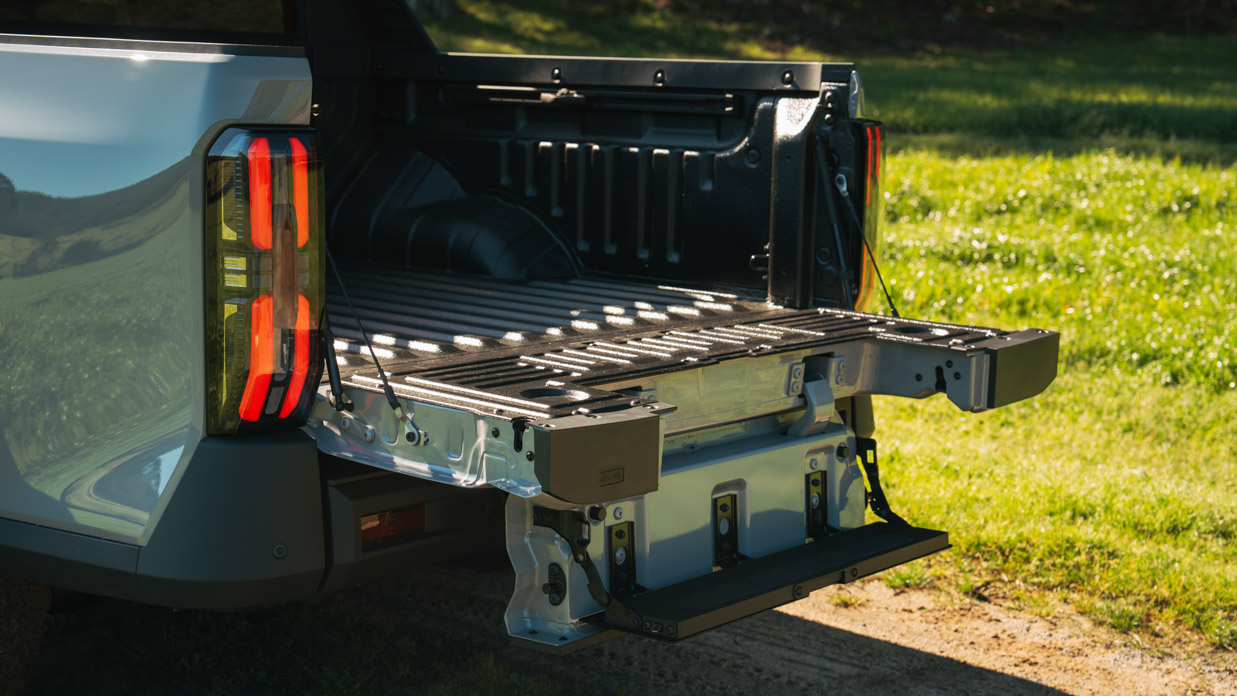
We used the latter feature to hitch up to two different trailers (a circa 1500kg horse float and a circa 2600kg caravan).
Visually, it’s an easier task with clear camera views on the Explore Pro. Towing itself was dispatched easily with the lighter float, though the weight of the big van was more keenly felt by the four-pot diesel.
Tare weights range from 2398kg (Explore) to 2498kg (Explore Pro). All variants have a GVM of 3320kg and GCM of 6500kg, leaving payload of 870kg (Explore) down to 770kg (Explore Pro).
Hitch up the maximum 3500kg braked trailer and remaining payload is competitive (and considerably more than wagons like the Toyota Land Cruiser Prado).
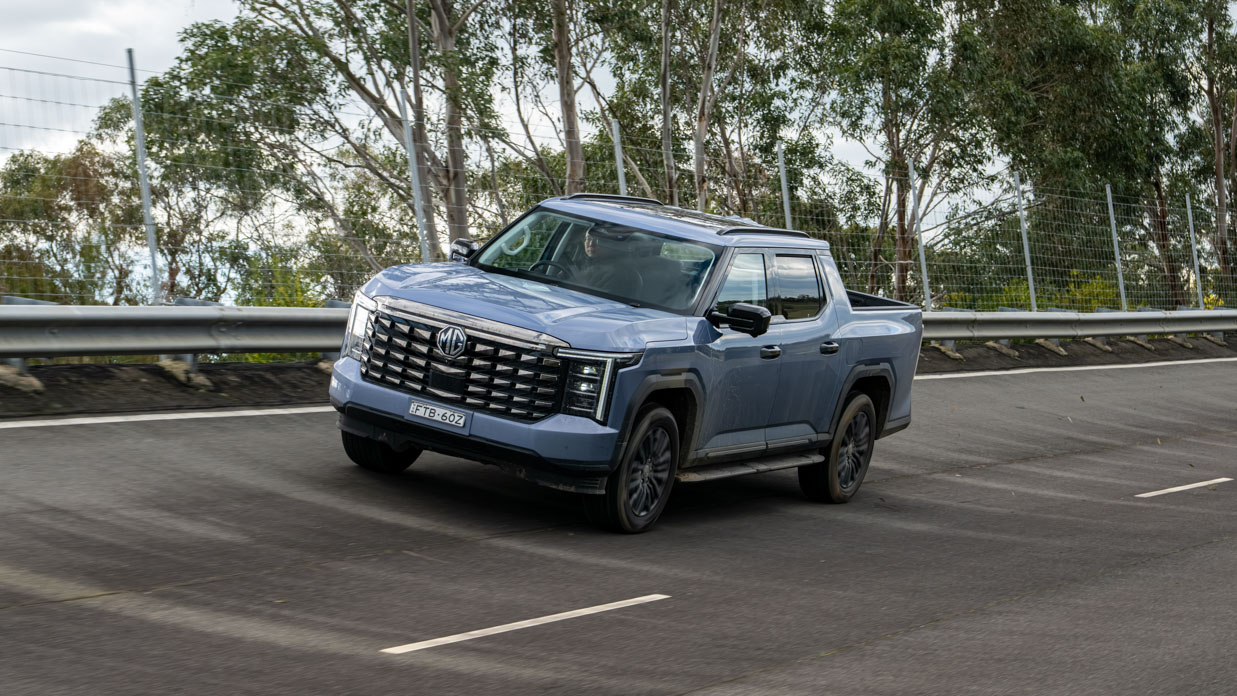
Overall, we are cautiously optimistic about the MG U9, which arrives with the size, the kit and most of the bona fides expected in this class — along with a few surprises, like independent rear suspension and left-field options like the folding midgate that give the Explore Pro grade a practical edge.
Still, some quality issues with the (technically pre-production) vehicles on the media pre-drive give us pause. We’ll be watching and listening carefully when we are able to test the U9 in full across Australian roads and off-road trails in the coming months.
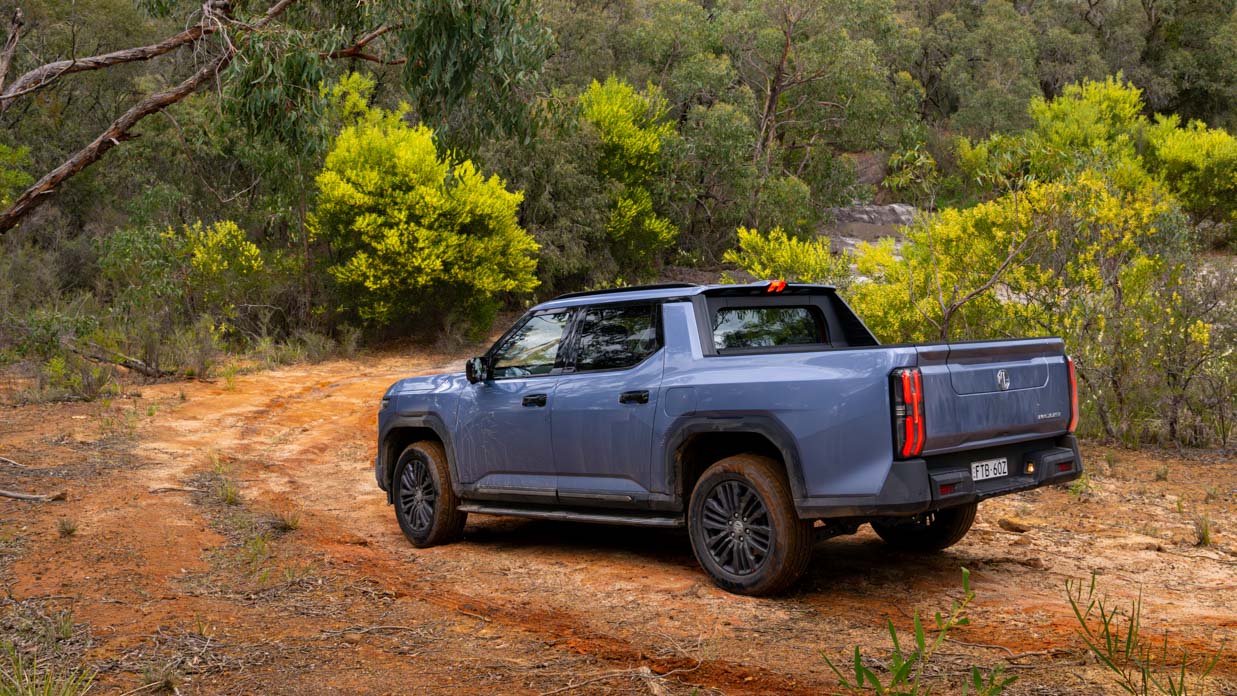
Doing so will give us the chance to not only rate the U9, but also to judge where it truly sits among its rivals. Is it better than the (cheaper) GWM Cannon diesel and Cannon Alpha PHEV, which have both steadily improved over time? Can the U9 challenge the Tasman, Triton, Hilux and Ranger?
A proper shakedown will reveal the answer very soon.
About Chasing cars
Chasing Cars reviews are 100% independent.
Because we are powered by Budget Direct Insurance, we don’t receive advertising or sales revenue from car manufacturers.
We’re truly independent – giving you Australia’s best car reviews.
The estimate provided does not take into account your personal circumstances but is intended to give a general indication of the cost of insurance, in order to obtain a complete quote, please visit www.budgetdirect.com.au. Estimate includes 15%^ online discount.
^Conditions Apply
Budget Direct Insurance arranged by Auto & General Services Pty Ltd ACN 003 617 909(AGS) AFSL 241 411, for and on behalf of the insurer, Auto & General Insurance Company Limited(ABN 42 111 586 353, AFSL 285 571).Because we don’t know your financial needs, we can’t advise you if this insurance will suit you. You should consider your needs and the Product Disclosure Statement before making a decision to buy insurance. Terms and conditions apply.
Indicative quote based on assumptions including postcode , 40 year old male with no offences, licence suspensions or claims in the last 5 years, a NCD Rating 1 and no younger drivers listed. White car, driven up to 10,000kms a year, unfinanced, with no modifications, factory options and/or non-standard accessories, private use only and garaged at night.
^Online Discounts Terms & Conditions
1. Discounts apply to the premium paid for a new Budget Direct Gold Comprehensive Car Insurance, Third Party Property Only or Third Party Property, Fire & Theft Insurance policy initiated online on or after 29 March 2017. Discounts do not apply to optional Roadside Assistance.
2. Discounts do not apply to any renewal offer of insurance.
3. Discounts only apply to the insurance portion of the premium. Discounts are applied before government charges, taxes, levies and fees, including instalment processing fees (as applicable). The full extent of discounts may therefore be impacted.
4. We reserve the right to change the offer without notice.